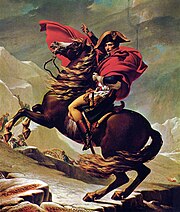Sam pulled their rented olive green Porsche Cayenne SUV down the lilac-lined driveway...

The Porsche Cayenne is a five seat mid-size luxury crossover manufactured by the German manufacturer Porsche since 2002, with North American sales beginning in 2003. Its platform was developed by Porsche and is shared with the Volkswagen Touareg and the Audi Q7. It is the first V8-engined vehicle built by Porsche since 1995, when the Porsche 928 was discontinued. Since 2008, all engines have featured direct injection technology. The Cayenne's chassis type numbers are as follows: Type 955 (2002–2006), Type 957 (2007–2010), and Type 958 (2011+).
The second-generation Cayenne (Type 958) was unveiled at the 2010 Geneva Motor Show in March following an online reveal on February 25, 2010.
The Cayenne's frame and doors are sourced from Volkswagen, who uses the frames and doors for the Volkswagen Touareg model. All other aspects of vehicle design, tuning and production are done in-house at Porsche.
...,stopped before a four-story, white stucco, terra-cotted-roofed villa overlooking the waters off Point de la Veille
Seems to be a fictional location.
...an impressive collection of Europe's jet set, from princes to celebritiesto captains of industry
"Jet set" is a journalistic term that was used to describe an international social group of wealthy people, organizing and participating all around the world in social activities that are unreachable to ordinary people. The term, which replaced "café society", came from the lifestyle of traveling from one stylish or exotic place to another via jet aircraft.
The term "jet set" is attributed to Igor Cassini, a reporter for the New York Journal-American who wrote under the pen name "Cholly Knickerbocker".
Although jet passenger service in the 1950s was initially marketed primarily to the rich, its introduction eventually resulted in a substantial democratization of air travel. Today, the term "jet set" no longer has cachet. It may still be valid today if it is understood to mean those who have the independent wealth and time to regularly travel widely, at will, for extended periods, for pleasure. It could also now be taken to mean those who can afford to travel in privately-owned or leased aircraft.
"Captain of industry" was a term originally used in the United Kingdom during the Industrial Revolution describing a business leader whose means of amassing a personal fortune contributes positively to the country in some way.
This may have been through increased productivity, expansion of markets, providing more jobs, or acts of philanthropy. This contrasts with robber baron, a term used to describe a business leader using political means to achieve his ends.
Some nineteenth-century industrialists who were called "captains of industry" overlap with those called "robber barons". These include people such as J.P. Morgan, Andrew Carnegie, Andrew W. Mellon, and John D. Rockefeller. The term was coined by Thomas Carlyle in his 1843 book, Past and Present.
Modern Use
In the late 1990s and early 2000s during the dot-com bubble the term began being used again in mainstream media, referring to the founders of successful multimillion dollar Internet companies, who were credited with changing the landscape of the United States through technology much in the same way 19th Century industrialists did through steel, textiles, and railroads. Later in the 2000s, after the burst of the dot-com bubble the term was used to refer to the leaders of the surviving companies. Business Insider profiled these business people in a 2011 report, citing multiple individuals who have recently reached a level of prominence in their technological industries. The eight profiled individuals were:
All are self-made billionaires.
- Richard Barton, founder of Zillow (for e-commerce)
- Bill Gates, co-founder and chairman of Microsoft (for software)
- Reed Hastings, founder and CEO of Netflix (for media)
- Reid Hoffman, founder of PayPal (for e-commerce)
- Steve Jobs, co-founder and former CEO of Apple (for personal computers)
- Mark Pincus, founder and CEO of Zynga (for social-network computer games)
- Mark Zuckerberg, co-founder and CEO of Facebook (for social networking)
The title is also regaining popularity in India, whose billionaires have more wealth than any other country in Asia.

![Location of Monaco (green)in Europe (dark grey) — [Legend]](http://upload.wikimedia.org/wikipedia/commons/thumb/f/f5/Location_Monaco_Europe.png/250px-Location_Monaco_Europe.png)




